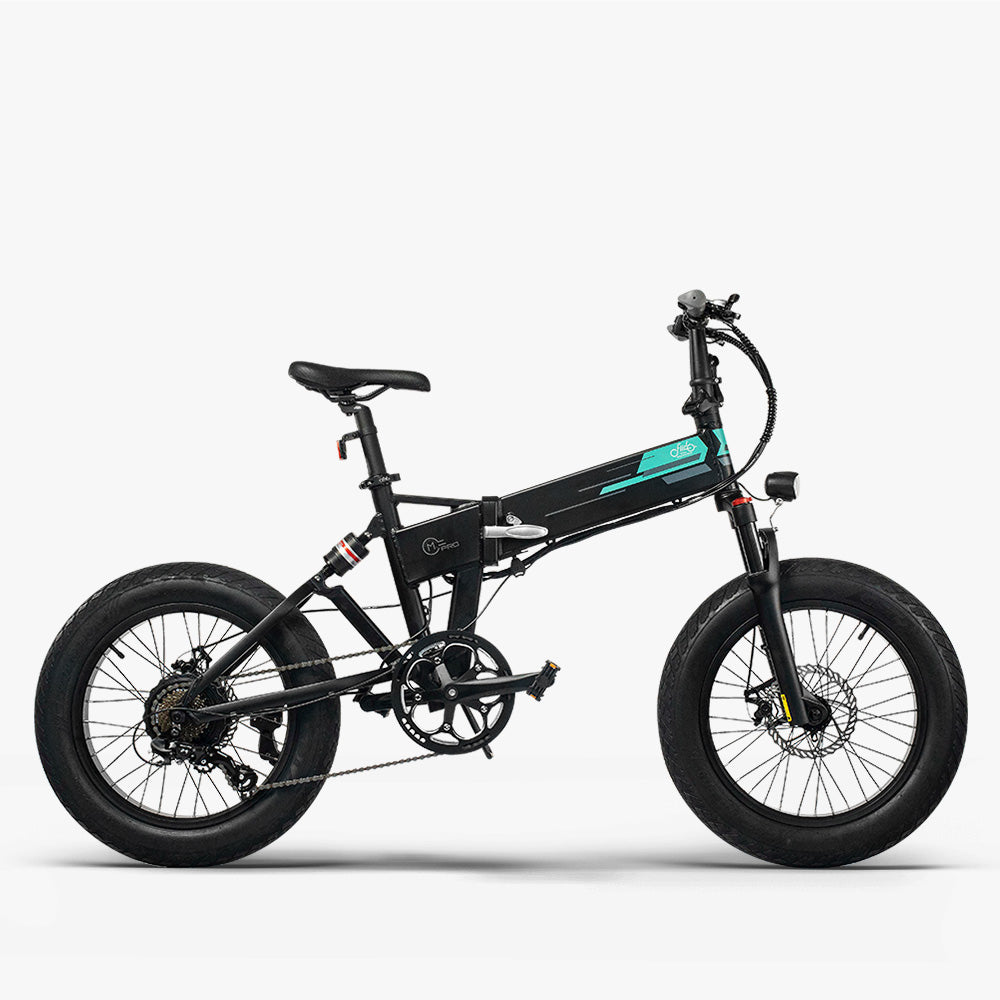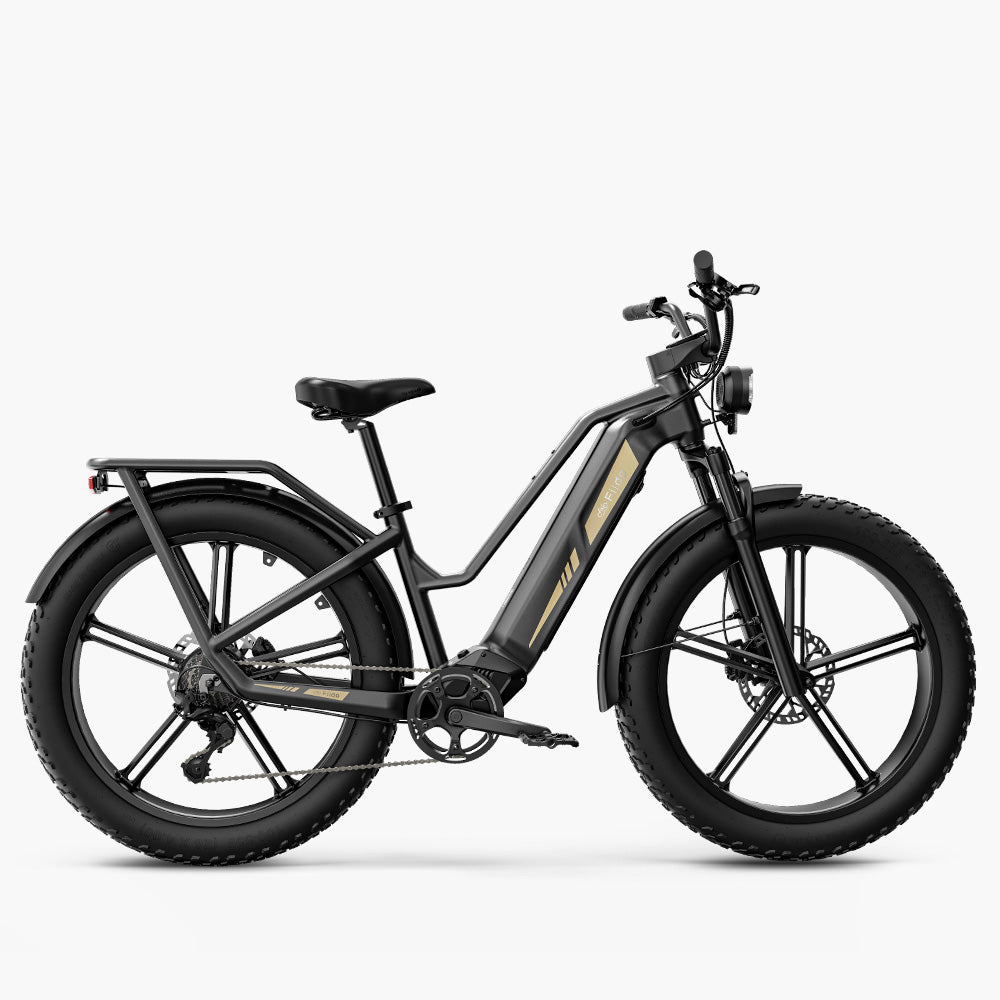In recent years, e-bikes have become one of the most popular modes of transportation. Especially in urban areas, they offer an eco-friendly, practical, and comfortable alternative to cars. They assist the rider with an electric motor, making travel effortless, even over long distances or hilly terrain. However, one question that many potential buyers have is: How much power does an e-bike need? The motor power, measured in watts (W), significantly influences the performance of an e-bike and the riding experience. In this article, we take a closer look at how wattage shapes the use of an e-bike and the differences that exist.

Definition of E-Bike Power
A. Basic Definition of Power
The power of an e-bike motor is measured in watts (W) and indicates how much energy the motor converts per unit of time. The more watts a motor has, the more energy it can convert into motion, which results in better acceleration and a higher carrying capacity. A powerful motor allows for a pleasant ride even on steep climbs or with heavy loads.
B. Units of Power
Watt (W) is the standardized unit for measuring electrical power. An alternative, historically used unit is horsepower (hp), with 1 hp being approximately 735.5 W. Although horsepower is more commonly used in the automotive industry, watt has become the standard unit in the field of electromobility, including e-bikes.
Power Ranges of E-Bikes
A. Common Power Categories
E-bikes are available in different power categories, each designed to meet various riding conditions and needs:
-
250W: This power level is the most common category for e-bikes used in urban areas. They provide enough power for daily commuting and meet legal requirements in many countries, including Germany. These e-bikes are ideal for flat terrain and offer a good balance between power and range.
-
500W: These motors offer more power and are suitable for longer trips or moderate climbs. They are designed for riders who need a bit more assistance, such as for longer distances or hilly terrain.
-
750W and above: E-bikes in this power category are especially suitable for rugged terrain and steep climbs, as commonly found in e-mountain bikes. These models offer an intense riding experience and are ideal for sporty riders or off-road enthusiasts.
Note: Before use, ensure that the motor power of the e-bike complies with legal requirements in your region to avoid possible restrictions or additional obligations.
B. Legal Restrictions
In Germany and many other European countries, the power of e-bikes that can be used on public roads without an insurance plate is limited to 250W. E-bikes exceeding this limit are classified as S-pedelecs or motorcycles and are subject to stricter legal regulations, including a helmet requirement and the need for an insurance plate. These regulations are designed to ensure road safety, particularly since more powerful e-bikes can reach higher speeds.

Impact of Power on the Riding Experience
A. Speed and Acceleration
The motor power directly affects how quickly an e-bike accelerates and the maximum speed it can reach. In Germany, standard e-bikes are limited to a speed of 25 km/h to be classified as a bicycle. S-pedelecs, on the other hand, can reach speeds of up to 45 km/h but are subject to the stricter regulations mentioned earlier.
B. Climbing Ability
A more powerful motor offers clear advantages when riding up steep climbs. While a 250W motor is sufficient for flat roads, riders in hilly areas may need an e-bike with 500W or more to easily tackle steep hills. Off-road riders, in particular, will clearly feel the difference in motor power when navigating rough terrain.
C. Battery Life
The higher the motor power, the more energy it consumes. This means more powerful e-bikes will drain the battery faster. Therefore, a compromise between motor power and battery capacity must be found to achieve the desired range. Many e-bikes offer various support modes that allow the rider to adjust the motor power to the specific riding situation, maximizing battery life.

How to Choose the Right Power for Your E-Bike?
A. Application Scenarios
The choice of the right motor power largely depends on the intended use of the e-bike:
-
250W: For daily city commuting and short commutes, a 250W motor is usually sufficient. These e-bikes are lightweight, have a long battery life, and are perfect for flat roads.
-
500W: If you travel longer distances or ride in hilly terrain, you should consider an e-bike with a 500W motor. These offer higher power and make it easy to handle moderate inclines without much effort.
-
750W and above: For adventurers who ride off-road electric bike or in mountainous terrain, an e-bike with 750W or more is the best choice. These motors provide the power needed to ride confidently on demanding terrain.
Note: Before use, ensure that the motor power of the e-bike complies with the legal requirements in your region to avoid possible restrictions or additional obligations.
B. Suitable for Different Rider Types
More powerful motors are particularly suitable for heavier riders or those who need a high level of assistance, such as older individuals or people with limited mobility. These motors provide smoother and more powerful support, contributing to a more comfortable riding experience.
Power Information for Fiido E-Bikes
After covering the basic power information for e-bikes, let's take a look at some popular Fiido models:
A. Fiido X
The Fiido X e-bike features a 250W motor, making it ideal for daily city commuting. It offers a lightweight, flexible solution for urban areas and stands out with its minimalist, sleek design.
B. Fiido M1 PRO
The Fiido M1 PRO fat-tire e-bike is equipped with a motor that has a torque of 50 Nm, offering excellent performance and a long battery life. It is perfect for commuters who need to travel longer distances or for recreational riders who value comfort and range.
Fiido M1 Pro Fat Tire Electric Bike
The most cost-effective fat tire ebike for off-road adventures.
C. Fiido Titan
The Fiido Titan off-road electric bike, equipped with a 70 Nm torque motor, is a powerful e-bike specifically designed for off-road adventures. It provides enough power to tackle difficult terrain, making it perfect for outdoor enthusiasts and adventurers.
Fiido Titan Robust Cargo Electric Bike
A powerhouse with a 248-mile range and 4-piston brakes, ideal for hunting and fishing trips.
Conclusion
Choosing the right motor power is crucial for the riding experience with an e-bike. Fiido offers a wide range of models tailored to different needs and preferences. Whether you're commuting in the city, traveling long distances, or seeking off-road adventures, Fiido has the right model for you. Choose the e-bike that best suits your riding habits and enjoy the freedom an e-bike offers!















